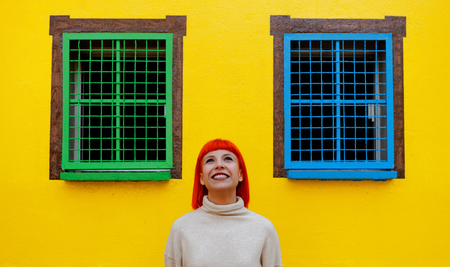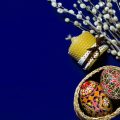Introduction to Feng Shui and Lucky Charms
Feng Shui, an ancient Chinese practice rooted in the harmonious arrangement of space and energy, has long captured the imagination of people far beyond its origins in East Asia. At its core, Feng Shui is concerned with achieving balance between natural elements and human environments, aiming to promote wellbeing, prosperity, and happiness. One of the most recognisable aspects of Feng Shui is its array of lucky charms—objects believed to attract positive energy or ward off misfortune. While these amulets have deep cultural significance in their homeland, their meanings and uses often shift as they travel across borders.
In the United Kingdom, there is a growing fascination with both Eastern philosophies and the broader concept of luck. From horseshoes above doorways to four-leaf clovers tucked into wallets, Britons are no strangers to lucky symbols. Yet, as Feng Shui lucky charms become more visible in British homes and shops, certain misconceptions about their purpose and effectiveness have emerged. This article seeks to explore the origins of Feng Shui, shed light on its guiding principles, and examine how global—and specifically British—interpretations of lucky charms can differ from their traditional roles.
2. Common Misconceptions in British Culture
In the heart of British society, Feng Shui lucky charms often find themselves woven into conversations about luck and interior design, yet several misconceptions persist. For many Britons, these artefacts are frequently perceived as mere decorative trinkets or quirky foreign novelties rather than integral elements of an ancient spatial philosophy. The tendency to overlook the deeper meaning behind these objects leads to misunderstandings about their true purpose and potential impact.
Widespread Myths Surrounding Feng Shui Lucky Charms
A recurring myth is that simply placing a lucky charm—be it a laughing Buddha, a coin frog, or a crystal sphere—anywhere in the home will automatically invite good fortune. This oversimplification disregards the importance of placement, intention, and harmonious integration with one’s environment. Some also believe that all charms have universal benefits, overlooking how personal context and space-specific energy flow (Qi) affect their efficacy.
Misinterpretations Among Britons
| Misconception | Reality |
|---|---|
| Feng Shui charms work like magic talismans regardless of context | Their influence depends on thoughtful positioning and understanding of Qi flow |
| All lucky charms bring the same kind of luck to everyone | Effects vary based on personal circumstances and spatial energy patterns |
| Lucky charms are purely ornamental and aesthetic | They are rooted in centuries-old philosophies about harmony and wellbeing |
| You must buy expensive or authentic pieces for results | Sincerity of intention and mindful placement are far more important than price tag or origin |
Cultural Nuances and Adaptation Challenges
Additionally, there is a tendency to conflate Feng Shui with superstition or to dismiss it as incompatible with modern British sensibilities. This often results in half-hearted adoption—incorporating select items without embracing the holistic approach—which limits their intended effect. Recognising these misconceptions helps open up more meaningful dialogue around integrating Feng Shui principles into UK homes, not just as a trend but as part of a mindful approach to living spaces.

3. Cultural Adaptation of Feng Shui in the UK
As Feng Shui makes its way into British homes and public spaces, it undergoes a fascinating process of cultural adaptation. Rather than a direct importation of Eastern practices, the British have shown an aptitude for blending Feng Shui’s principles with their own rich heritage of design and spatial awareness. In many households, you’ll find that so-called “lucky charms” are selected less for their traditional symbolism and more for how they harmonise with classic British interiors—think jade figurines nestled amongst antique teacups, or Bagua mirrors hung with understated elegance beside Georgian door frames.
This reinterpretation extends to public spaces as well. Some offices and cafes subtly integrate Feng Shui concepts by placing plants near entrances or arranging seating to encourage conversation flow, all while maintaining quintessentially British aesthetics such as soft colour palettes and period features. There is often a misconception that authentic Feng Shui must look overtly exotic; in reality, its essence can be woven through subtle choices, from the positioning of armchairs to the use of natural light. By adapting these practices with sensitivity to local tradition, British spaces create a unique dialogue between East and West—one that values both spatial harmony and cultural continuity.
4. Aesthetic Value versus Superstition
Within British culture, the line between appreciating Feng Shui lucky charms for their aesthetic appeal and believing in their mystical properties can often be blurred. This distinction is crucial in understanding how these charms are perceived and integrated into British interiors. Many people in the UK are drawn to the visual harmony, colour palette, and craftsmanship of Feng Shui items, yet remain sceptical about their ability to influence luck or fortune. This divergence reveals much about the British approach to home décor—where style frequently outweighs superstition.
Disentangling Visual Style from Luck Belief
British tastes tend to prioritise subtlety and balance. The incorporation of Feng Shui charms is often less about invoking good fortune and more about introducing an element of Eastern-inspired design. For example, a jade plant or a laughing Buddha may be selected for its organic shape, calming presence, or as a conversation piece rather than for any perceived magical quality.
| Aspect | Aesthetic Value | Superstitious Value |
|---|---|---|
| Colour Choice | Chosen for room harmony (e.g., gold for warmth) | Red for wealth and luck per tradition |
| Placement | Based on spatial design principles | Based on Bagua map or compass directions |
| Material | Preference for natural textures (wood, stone) | Specific stones believed to bring energy (jade, citrine) |
| Selection Criteria | Visual interest or trend alignment | Cultural symbolism or prescribed function |
The Influence of British Taste on Display and Use
The restrained elegance typical of British interiors means that charms are often integrated seamlessly into existing décor rather than being focal points. There is a tendency to reinterpret these objects through a Western lens—valuing them as artistic artefacts while remaining reserved about supernatural claims. This approach not only reflects the pragmatic side of British sensibilities but also highlights a broader cultural openness: borrowing global elements without necessarily adopting their underlying beliefs.
Navigating Misconceptions with Sensitivity
Understanding this separation between aesthetic appreciation and superstition is key to navigating conversations around Feng Shui in the UK. It prevents assumptions that all who display such charms are deeply invested in their mystical origins, and acknowledges the evolving nature of cultural exchange in British society.
5. Practical Tips for Mindful Inclusion
For those in the UK interested in incorporating Feng Shui lucky charms into their homes or workplaces, mindful inclusion is key. Rather than simply following trends or misconceptions, its important to approach these practices with respect for their cultural origins and an understanding of how they can harmoniously fit into a British context.
Respecting Authenticity and Purpose
Begin by learning about the true significance of each charm—such as the Money Frog or Bagua Mirror—and avoid using items merely as decorative tokens. Research their traditional uses, and consider consulting reputable sources or local experts in Feng Shui to guide your choices. This ensures that your intention aligns with the charm’s original purpose rather than perpetuating stereotypes or inaccuracies.
Blending With British Interiors
British interiors are celebrated for their balance of heritage and contemporary flair. To seamlessly include Feng Shui elements, select charms made from materials and finishes that complement your existing décor. For example, a subtle jade ornament can add a gentle nod to prosperity without clashing with classic Victorian features or modern minimalist touches. Placement is equally important; position items thoughtfully, such as near entrances or in communal spaces, to encourage positive energy flow without overwhelming the room’s character.
Mindfulness Over Materialism
Remember that Feng Shui at its heart is about creating harmony and well-being—not just attracting good fortune through objects. Instead of amassing numerous charms, focus on a few meaningful pieces placed with intention. Reflect on what each item represents for you personally and how it supports your lifestyle within the rhythms of British daily life.
By taking a considerate and informed approach, you honour both the wisdom of Feng Shui and the distinctive qualities of British culture—fostering spaces that feel authentic, balanced, and welcoming.
6. Concluding Thoughts: Bridging East and West
Reflecting on the cultural journey of Feng Shui lucky charms within British interiors reveals more than just a decorative trend—it highlights the importance of respectful exchange between traditions. As British culture embraces global influences, it becomes essential to move beyond surface-level adoption and towards genuine understanding. When we appreciate the symbolism and intent behind Feng Shui objects, rather than viewing them as mere tokens of luck, we open doors to holistic interior experiences. This mindful approach not only respects the origins of these charms but also enriches our own living spaces with meaning and positive energy. In bridging East and West, British interiors can celebrate diversity while fostering harmony, balance, and well-being for all who enter.


